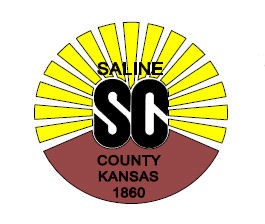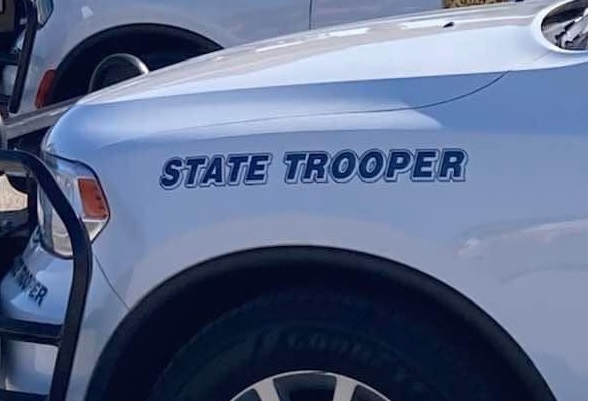With City Building Inspector Jim Brown and Fire Marshall Roger Williams present, it was clear from the start that this wasn’t going to be a standard tour of Road and Bridge’s Shop. Director Gary Nash invited County Commissioners to tour the shop following his submission of a “request for action” to build a $2.6 million, new steel building a few weeks earlier.
The present shop has an appraised value of $60,490 and consists of approximately 14,500 square feet. The main structure was built in 1956; during the 70’s, there were three additions. In 2015, the roof was replaced, at a cost of $89,000; much of this cost was paid for by insurance.
Nash identified three objectives:
• Tour the facility, to “get eyes on” and see what R&B staff “are working with”.
• Look at the physical grounds for future placement of any new facility.
• Have Commissioners “leave with enough information to make an informed, educated decision about whether to fix, remodel” or authorize plans to construct a new facility.
While seated in the break room, Commissioners were shown areas of the ceiling with recent water damage. While the roof was replaced, there is concern that the ceiling sub-structure has been damaged and the ceiling space has become water logged, creating concerns about mold. Nash said the roof “is cancered out”.
Nash described extension cords being used instead of permanent wiring, power strips for computers that “aren’t up to code” and a rodent infestation. Fluorescent tube lightening is still used; it is more expensive than LED lighting, adds heat in the summer, and requires special sleeves to keep the tubes from shattering. It is becoming increasingly difficult for staff to locate and purchase the fluorescent lights and ballasts. Nash said “all electrical will need to be redone”.
There are four separate sets of “heating and ventilation” equipment. Williams suggested that carbon monoxide could be present and it would be “interesting” to bring in CO detectors.
Nash said that code requires restrooms to have seven foot tall ceilings. While the doors and walls to the one male restroom extend six or more feet, there is about a foot gap at the top, between the hallway wall and ceiling.
Moving through the shop area, Commissioners could see that there was no ceiling space to extend the lift on the new “snow plows” with stainless steel beds. A road grader that needed its “edge wedge” serviced could only be partially backed into a bay. A Doosan escavator only had one inch of leeway on either side of the bay door as it was brought into the shop.
Nash said the wash bay was not big enough and wanted a bay that included a cat walk with two hoses on top and two hoses on the bottom. He spoke of concerns with a “silt oil separator”. He noted that the exterior wall and floor areas of the wash bay had “rotted out”.
As the tour group became strung out, Commission John Price was overheard to say “there are things that need to get done right away”. He then asked “why weren’t these issues addressed ten years ago?” When told of Price’s comments, County Administrator Rita Deister said the current problems weren’t “from staff failing to address issues”, noting previous Commissions have debated this over the years.
Back inside, Chairman Monte Shadwick asked what would be involved in bringing a remodeled facility up to Americans with Disabilities Act “code”. Brown said “ADA compliance is complex”. If a new facility were built, it would have to be 100% ADA compliant. With a remodel, 20% of the budget must be devoted to addressing ADA compliance issues in a specific order, starting with:
• Creating an accessible entry.
• Providing clear paths of travel.
• Making restrooms compliant.
Much of ADA’s codes are designed to make a facility wheel chair accessible. If a R&B worker were injured and confined to a wheel chair, he would need to have some access to the facility.
Williams said that adding fire sprinklers is another consideration. Codes specify how much gasoline, diesel, and combustible materials can be kept in the shop. He noted that acetylene torches present a danger for those who walk by on narrow paths. One option is to locate problematic shop materials in another building. Another option might be to physically move the wash bay to another area and reduce the square footage below 12,000 square feet—the threshold for which sprinklers are required. Nash has a “call into the State Fire Marshall” regarding underground storage tanks. This raised an issue about whether the shop can re-fuel its vehicles at the City/County facility on Elm.
Discussion turned to whether the building could be remodeled in phases. Brown said yes, but because operations of a few bays would be shifted to other areas of the shop, these other areas would first have to come into code compliance. Then the problematic bays would be brought into compliance.
There is no requirement that the shop have a tornado shelter, but it was suggested the old munitions bunkers might make a good shelter . . . if staff have ample time to react.
Much discussion focused on shop doors. Commissioner Luci Larson said she learned that the doors could be made wider but the ceiling can’t be made taller.
Williams said he “doesn’t have a dog in the hunt”, but the existing building is “over allowance” and is “pre-existing and non-conforming”. Price admitted that when the roof cracked “the Health Department was in rough shape”. Williams said he was “part of the group that shored it up”. Williams said that the Salina Fire Department learned with the Station 1 remodel that “you don’t know what you have gotten into until you get into it”.
Commissioner Jim Gile said he saw “no reason to tear this down; it could be used for cold storage”.
Next Step
Building Inspector Brown and Fire Marshal Williams will write up their concerns. Their findings will be added to concerns already identified by Nash. When asked for a timeline, Williams said that if he needed to, he’d write the report immediately. Commissioners said that they hoped to receive the report prior to Christmas.
It May Be Old, But Is It Still Functional?
While on the tour, this writer (who has no expertise in this matter) noticed that conditions at the Saline County shop are similar to those at the City’s garage. A shop worker confirmed that the overall condition of both buildings are similar.
If there had been serious safety violations, Brown and Williams would take strong, immediate action. Both spoke openly about the possibility of remodeling. Knowledgeable individuals have expressed opinions to this writer that it is not yet necessary to replace the shop.
What would be most useful is if the Building Inspector and Fire Marshall could make their inspection reports on all County building public, so the public can see if future spending addresses the greatest needs. Larson asked that all costs of remodeling versus building be identified. This seems responsible, but possibly challenging to do.
Director Nash noted in a written summary that “fixing or remodeling this facility does not solve our problem with the physical size of the shop, lack of functionality and efficiency of having all agencies under one roof”. So the ninety minute tour may have only resulted in a casual look at the real issues.
—
Story by: Karen Shade for KSAL News
Copyright © Alpha Media, 2015. All Rights Reserved. No part of this story or website may be reproduced without Alpha Media’s express consent.



